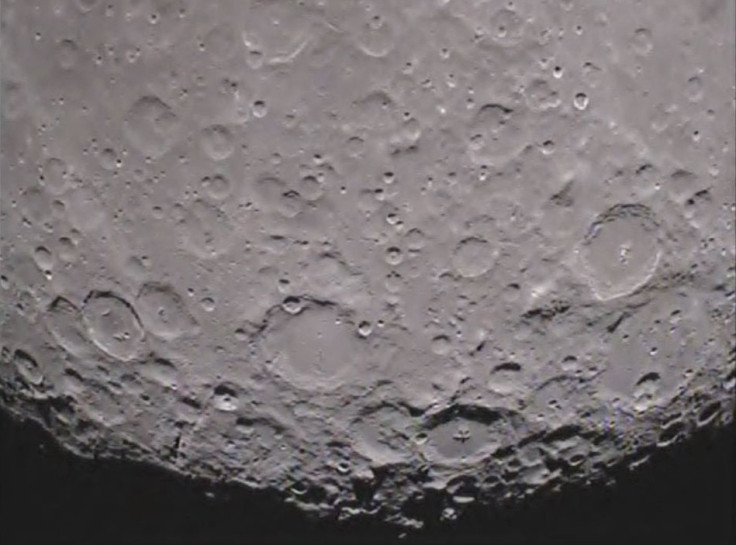Nasa Captures Little-Known Moon's Far Side [VIDEO]

Nasa has captured its first unique view of the moon's far side with its lunar spacecraft Gravity Recovery and Interior Laboratory (GRAIL).
In the Nasa video, which runs for around 30 seconds, the north pole of the moon is clearly seen. Also visible is Mare Orientale, a vast impact basin which looks like a target ring in the bull's eye; it is believed to be over three billion years old and spans about 950 km. The video also shows the Drygalski crater with a distinctive star-shaped formation in the middle. It is a central peak which was created many billions of years ago by a comet or asteroid impact and covers around 149 km.
According to Nasa scientists, the video was taken by Grail which comprises two identical spacecraft, recently named Ebb and Flow, each of which is equipped with a MoonKAM. The images were taken as part of a test of Ebb's Moon Knowledge Acquired by Middle school students (MoonKAM). It will be used by students nationwide to select lunar images for study.
MoonKAM is a programme organised by Nasa which gives a chance to students to learn more about the moon. Tens of thousands from fifth to eighth grade students will select target areas on the lunar surface and send requests to the MoonKAM Mission Operations Center (MOC). Photos of the target areas will be sent back by the GRAIL satellites and made available in the images section of the website. Students will use the images to study lunar features such as craters, highlands, and maria while also learning about future landing sites. The programme is led by Dr. Sally Ride, America's first woman in space, and her team at Sally Ride Science in collaboration with undergraduate students at the University of California, San Diego.
The MoonKAM mission will begin in 2012 when Grail satellites are in orbit around the Moon and the dedicated MoonKAM cameras are activated. The mission will last approximately 80 days.
"The quality of the video is excellent and should energise our MoonKAM students as they prepare to explore the moon," said Maria Zuber, Grail principal investigator from the Massachusetts Institute of Technology in Cambridge.
"We have had great response from schools around the country; more than 2,500 signed up to participate so far," said Sally Ride, astronaut from the Nasa. "In mid-March, the first pictures of the moon will be taken by students using MoonKAM. I expect this will excite many students about possible careers in science and engineering."
Watch the video:
© Copyright IBTimes 2024. All rights reserved.





